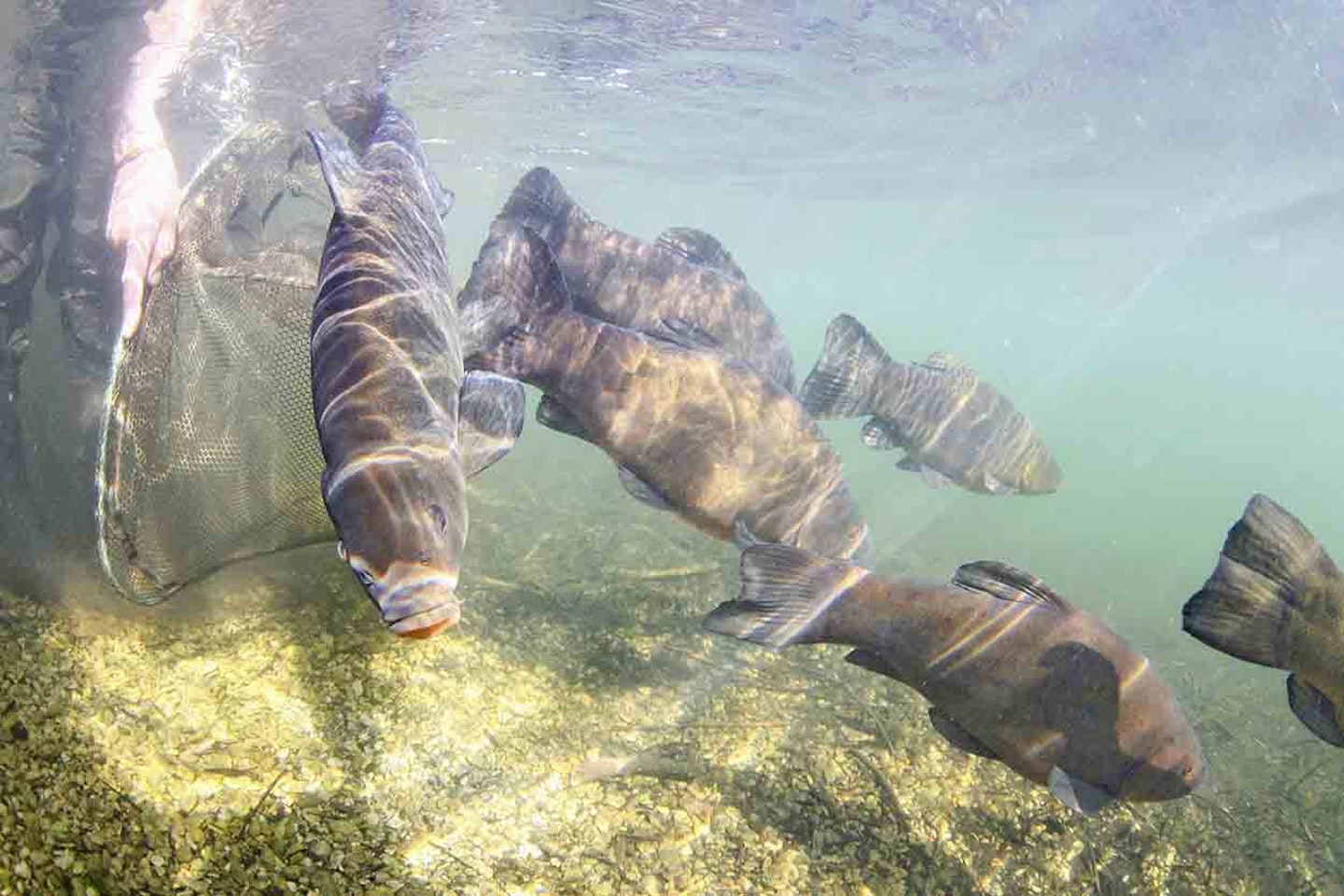Of all our coarse fish, tench are perhaps the most enigmatic species.
Their green colour and tiny red eyes mean they’re unmistakable, and almost unique.
While they’re cyprinids – the same as carp, roach, bream and barbel – tench have a lineage that diverged from these other species quite early on in their evolution, meaning that they occupy their own ecological niche and cannot hybridise with other species.
To understand the unique niche in the environment tench have evolved to use, we need to look at their natural habitat in the River Danube and its tributaries, where these fish have lived for millennia.
The Danube once had a huge floodplain that stretched several miles from the main river. Dotted over this expanse of swampy land were many ponds, backwaters and channels that would only be connected to the river during floods, and for much of the year would be choked with weed and slowly drying out. Few fish species could survive the wildly fluctuating temperatures and oxygen levels in these disconnected pools, yet tench and to a lesser extent crucian carp, evolved to call these places home.
Everything, from the dark green colour, which acts as camouflage amid the dense mats of aquatic plants, to the diet of tench, has developed to make the most of these extreme habitats. Tench are also able to survive in pools with very low dissolved oxygen and high temperatures, meaning that they can live through the harsh summer conditions when other species will perish. This toughness has also meant that tench are easy to transport, and so they’ve been spread by man across much of Europe and even farther afield to the Americas and Australia.
Our highly managed modern rivers have often lost their floodplains and pools. That doesn’t mean that tench have totally disappeared from our large, slow-flowing rivers. Often you will find small isolated populations in abandoned backwaters, weed-chocked margins and marinas, where conditions are still suitable for them. Are these fish the remnants of a time, many hundreds of years ago, when our rivers were wild places, or just the result of a forgotten stocking? We will probably never know.

How the species spawns
Fortunately, while their natural habitats may have dwindled, tench often do remarkably well in man-made stillwaters, especially gravel pits, where the weedy conditions suit their lifestyle.
The one problem that tench often face, especially in deeper gravel pits, is insufficiently high water temperatures to allow them to spawn successfully. Temperatures approaching 20C are required, and this explains why tench spawn so late, very often in June or even July. In more northerly latitudes, tench may struggle to spawn at all, and instead they’ll reabsorb the underdeveloped eggs.
As you might expect, tench spawn in dense vegetation, often in water only a few inches deep. If you look for the thickest weed, often topped with filamentous algae, then the tench will probably not be far away. The males congregate around the spawning areas a few days before the larger females arrive, and spawning normally only lasts a few days.
The females are invariably much larger than the males, maybe up to twice as big. This simply gives them the capacity to carry a large number of eggs, with bigger fish carrying more and larger-sized ova. Male tench can also be distinguished by the large pelvic fins and protruding pelvic muscle. It is thought that the large fins allow the male to shield the female from other suitors, giving him a better chance of fertilising her eggs.
The eggs are sticky, and develop quite quickly. Hatching normally takes place in about a week. The young fish then often disappear and are not seen for several years as they slowly grow safe amid the thick weed growth. Only normally when the tench reach a weight of a pound or more do they leave the sanctuary of the thickest weedbeds and so become catchable. It can take five or six years for a tench to reach this size, and it is believed that individual fish may live for 20 years or more.

The legend of the doctor
Tench have long had the nickname of the ‘Doctor fish’, because other fish were said to rub up against their slimy flanks to help heal wounds.
While tench do have more and thicker slime than other coarse fish, except for eels, there is no evidence that this actually has any antibiotic properties. What the slime does allow, though, is for tench to effortlessly pass through dense submerged plants. This can be a big advantage for these fish, enabling them to use areas of lakes and rivers where few other fish can venture.
In fact, eels often share similar habitats to tench and, needless to say, these fish are also slippery customers!
Radio-tracking studies have shown that adult tench can travel quite extensively each day in the search for food. The fish will often visit the same areas of a lake repeatedly over many days, sampling the density of invertebrate food and stopping to browse in areas where food is abundant. Tench have very sensitive tastebuds around the mouth and barbules and these enable them to find food very effectively. Tench will inhale a mouthful of mud, detritus and food and wash this over the gill rakers before spitting out anything that is inedible. They are able to eject a hook while hardly moving.
Tench are often overshadowed by carp, but they’re a very interesting species and have developed a very specific life history and behaviour that enables them to survive well in some very inhospitable environments. Tench really are among the toughest of all our coarse fish!
